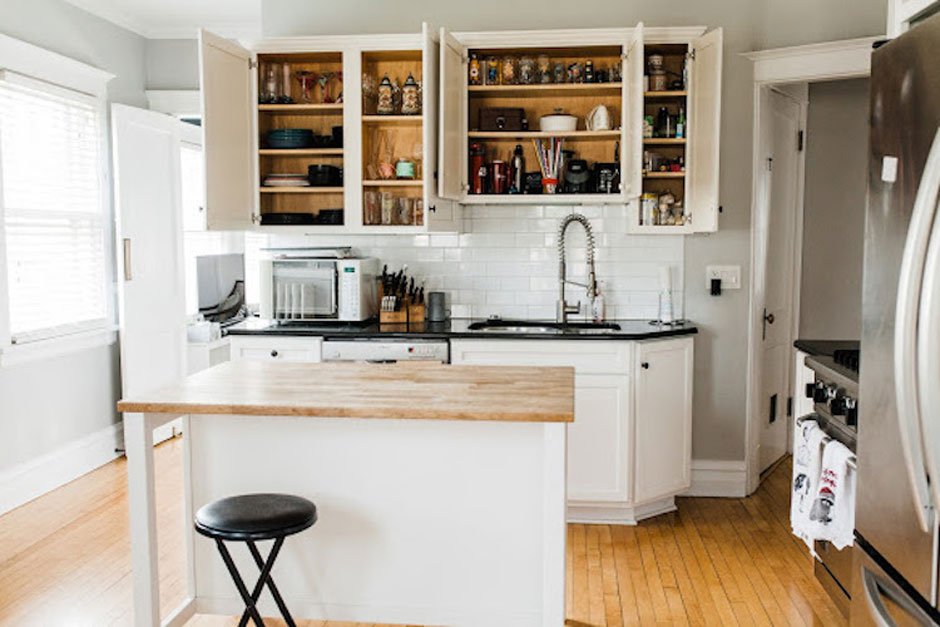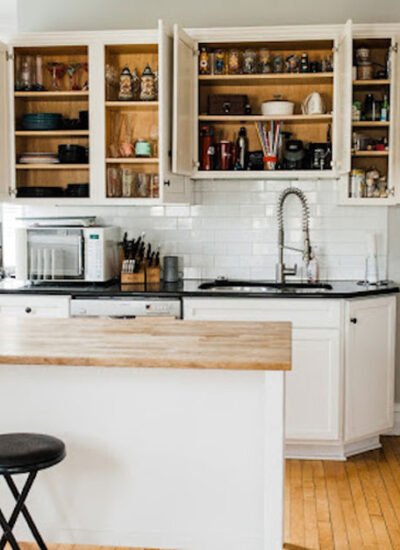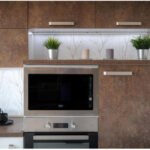 Balancing domestic routines with professional responsibilities can feel like an ongoing shuffle. Between planning meals, keeping spaces clean, and responding to work tasks, it’s easy for time to disappear without much to show for it. A few simple tools and some clear planning can help keep things running more smoothly. This article explores ways to stay on top of both kitchen and office tasks without stress or over-complication.
Balancing domestic routines with professional responsibilities can feel like an ongoing shuffle. Between planning meals, keeping spaces clean, and responding to work tasks, it’s easy for time to disappear without much to show for it. A few simple tools and some clear planning can help keep things running more smoothly. This article explores ways to stay on top of both kitchen and office tasks without stress or over-complication.
Morning Made Easy with Simple Prep Tools
Jars with lids are great for overnight oats, chia puddings, or yoghurt parfaits. Preparing these ahead of time can remove the hassle of breakfast decisions. Keeping a basic kitchen scale on hand helps with portion control, while stackable containers and fridge baskets make storage neater. Labelling jars and sections in your fridge reduces the time spent searching for ingredients.
A good blender, a sharp knife, and a chopping board nearby allow for quick assembly of nutritious meals. Avoid cluttering your counter with too many gadgets. Sticking to three or four multipurpose tools can speed up prep and reduce washing up later.
Streamlining Decision Fatigue Before 9am
Choices can be tiring. Keeping your mornings predictable can save mental energy for later. Laying out clothes the evening before removes one task. Setting up a weekly rotation of meals gives structure without limiting variety. .
Smart speakers or phone timers can help you stay on track. A gentle audio prompt can nudge you toward your next task. Keeping essentials, like keys or charging cables, in the same spot helps avoid last-minute scrambles. Making fewer decisions early in the day leaves you more focused once work begins.
The Desk-Ready Kitchen Corner
Having a transitional space between the kitchen and the desk can help reduce the mental shift between personal and professional tasks. A corner of your kitchen counter or dining table can serve this purpose. Keep a small notepad or digital planner nearby to capture ideas that come to mind while you prep breakfast.
If you tend to juggle food and admin simultaneously, store a phone stand, charging cable and sticky notes in a basket. This helps you move smoothly between checking emails and prepping meals. A designated multi-use space can act as a bridge rather than a barrier between areas of your life.
Smooth Transitions Between Roles
Switching roles throughout the day can create mental friction. Short, physical cues can ease that change. Lighting a candle, stretching your arms, or switching playlists creates a sense of shift. Using the same small routine at transition points helps train your brain to expect what comes next.
A wall calendar or digital scheduler with colour-coded blocks allows for quick planning. Setting 5-minute reminders before each major switch gives you time to prepare. These techniques can reduce lag between finishing breakfast and starting your first task or winding down from emails to tidy up the kitchen.
Digital Tools That Keep Admin Simple
Simple digital tools can take care of repetitive or time-consuming admin. File scanning apps, cloud backups and task lists help you stay organised without adding pressure. When working with documents, consistency matters. That includes keeping formatting tidy and ensuring file compatibility when sending files to others.
If you’re dealing with reports, recipes, or shared materials, turning Word documents to PDFs is often a cleaner, more professional option. Using Adobe’s free online tool makes this quick and secure. There’s no need to download anything, and the layout stays intact. That saves time for more important tasks.
Light Work During Light Chores
Low-effort chores offer great opportunities to catch up on work tasks that don’t require full focus. For example, checking your calendar, organising your inbox or skimming notes can all be done while waiting for your toast to pop or your tea to steep.
Folding laundry or unpacking groceries can double as time to listen to voice notes or brainstorm your next to-do. Instead of seeing chores as blocks to productivity, treating them as light-focus zones can actually help keep momentum going. It’s a gentle way to layer work into routine without draining energy.
Low-Tech Organisers That Still Work Wonders
Digital tools are helpful, but visible reminders have their place too. A cork board in the kitchen can display both your meal plan and your task list, letting you check everything at a glance. Colour-coded sticky notes can highlight priorities, shopping needs or deadlines.
Mason jars aren’t just for food. They work well for holding pens, receipts, chargers, and cables. Labelled baskets on open shelves can store everyday items without cluttering your desk. Using physical organisers gives you an overview that doesn’t depend on screen time or battery life.
Break Time as Reset Time
Taking short breaks can refresh your mind and help reset your environment. Use a 10-minute tea break to wipe down surfaces, tidy your workspace or swap laundry. These quick actions support a more productive return to your desk. Staying mobile for short bursts can improve focus later on.
Small reset routines throughout the day can make a big difference. Preparing a quick snack, opening a window, or switching out your water glass keeps things fresh. Avoid defaulting to social media during breaks. Try a short breathing exercise or jot down something you’re grateful for instead.
Evening Wind-Down that Prepares Tomorrow
A calmer start tomorrow begins with simple actions tonight. Washing your jars, prepping your breakfast, and charging your devices sets the tone. Reviewing your schedule alongside your grocery list makes planning easier.
Wiping down your work surface and setting out one small task for the next morning can reduce resistance when you wake. It also helps mark the end of the workday. Soft music or a podcast while you reset your kitchen keeps the process enjoyable. Let your evening routines support a smoother day ahead.
Make Each Day Flow Better
Daily life doesn’t have to feel fragmented. Keeping both your kitchen and your workspace functional with a few smart tools and habits allows everything to run more smoothly. You don’t need expensive gear or rigid routines to feel more in control.
Try out one or two manageable suggestions this week. Whether it’s prepping meals ahead, introducing digital shortcuts, or creating a mini work zone in the kitchen, every small change adds up. Let your space work with you, not against you, and your day will feel far more manageable.





Leave a Reply